Roll into strawberry season with this gorgeous strawberry cake roll: a delicate almond sponge cake decorated with a cute strawberry design and filled with strawberry whipped cream.
The Japanese are really on to something with these patterned cake rolls. They are as impressive to behold as they are delicious to eat, and are arguably much easier and less time-intensive than fancy frosted layer cakes.
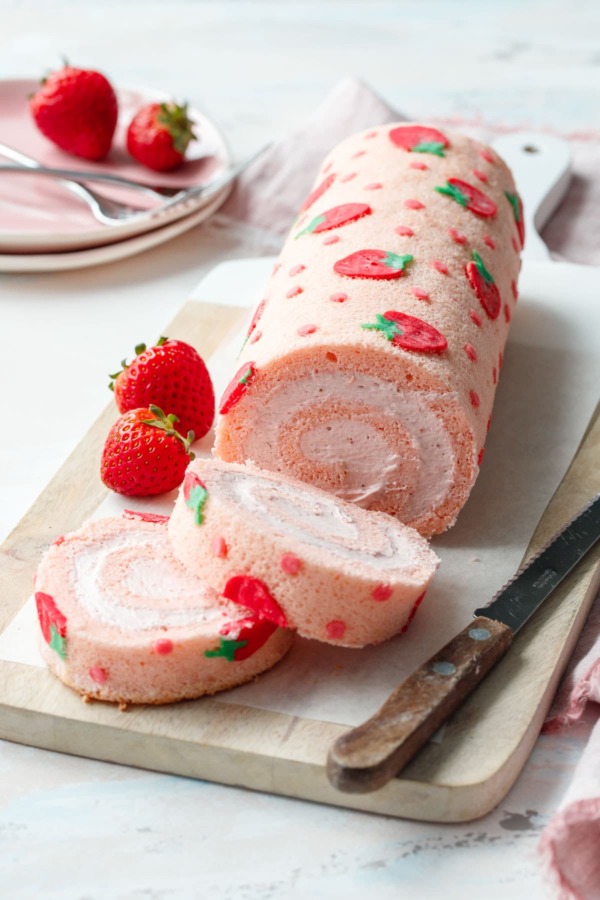
Talk about dressed to impress!
If you’re the type that wants to create beautifully decorated cakes that’ll wow your guests, but don’t want to deal with a laborious layer cake, you should definitely give a Japanese-style patterned cake roll a try.
This stunning style of cake allows you to create intricate designs that are baked right into the cake itself, no fancy frosting necessary.
The technique does require some basic piping skills (the more you practice the better you’ll get), but honestly, even if you just piped a bunch of polka dots all over the thing, the result would be absolutely lovely.
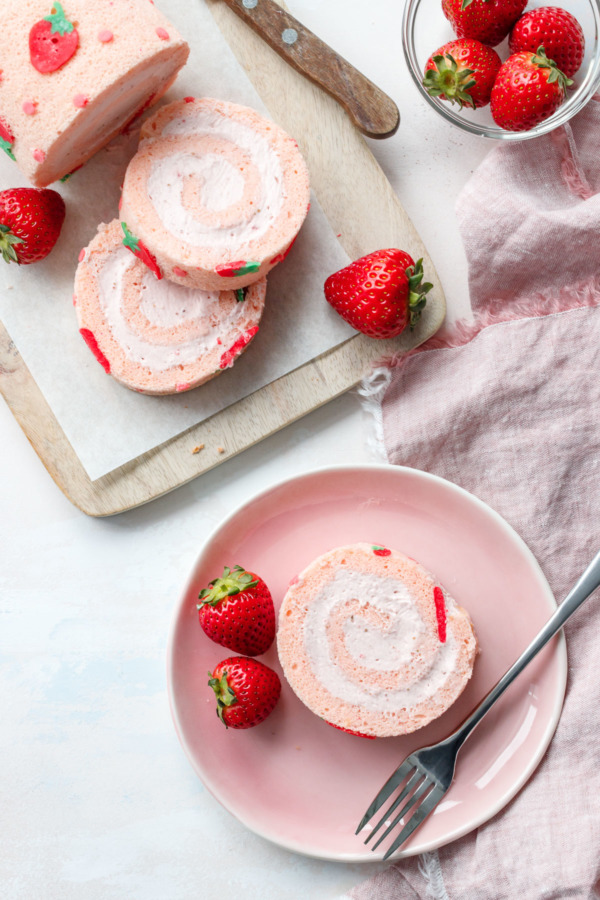
Unlike my pumpkin roll cake which divides the main sponge batter into three separate colors, this method uses a separate paste-like batter that can create a more detailed design.
The paste is piped onto a sheet of parchment, freezing briefly to set, then an airy sponge cake batter is poured over the top. After baking, peel back the parchment paper and prepare to be wowed!
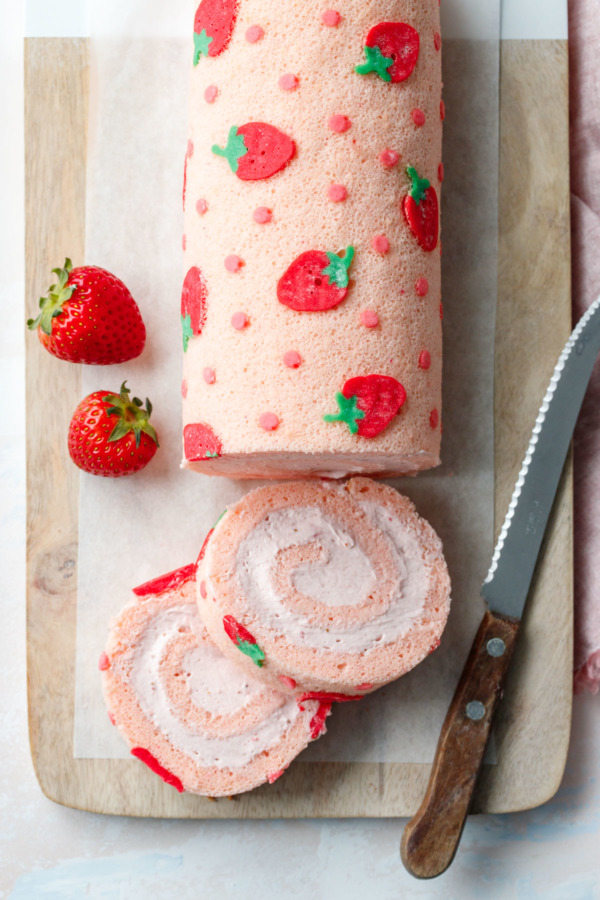
I originally went for a more abstract strawberry design, with a pink background, green squiggles and yellow seeds. It came out quite cute, but looked more like an Easter egg than a strawberry. And unfortunately, I failed big time when it came to the filling on that first roll, attempting a strawberry marshmallow filling that, while it tasted amazing, oozed out of the ends of the roll like sweet, sticky magma.
Take 2.
Since I had to remake the cake anyway to fix the filling, I also reworked the design, opting for dots instead of squiggles (easer to pipe), and simplified red berries so there would be no mistaking the flavor of this cake roll.
The cake batter paste gives the pattern an almost embossed feeling, the paste cooking up slightly firmer than the surrounding sponge. It’s a cool effect, although it is a bit tricky to cut since the paste bakes up firmer than the sponge cake itself (tip: use a serrated knife to very gently saw through the bigger shapes). Or, plan a design that allows you to cut in between the piped shapes.
The little bubbles that appeared in the berries were a complete accident, but don’t they look like little seeds?
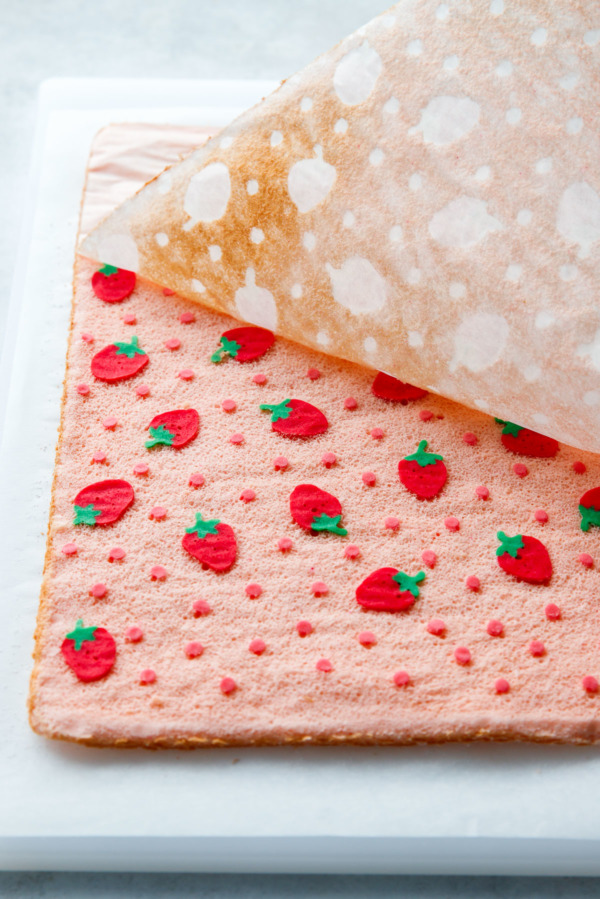
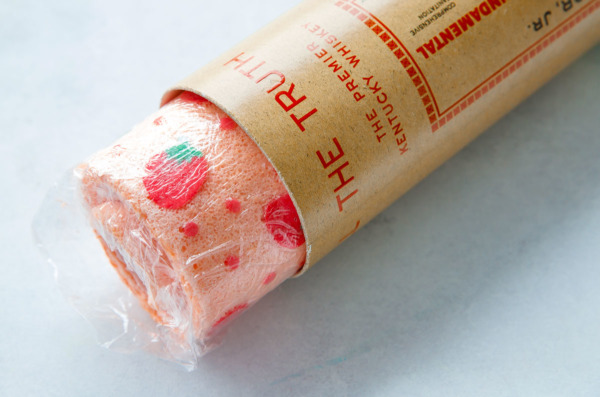
Pro Tip: To keep your cake roll from slumping into an oval, chill it in a large cardboard mailing tube (about 3.25″ in diameter). I used a cardboard tube that a whiskey bottle came in and it couldn’t have been more perfect.
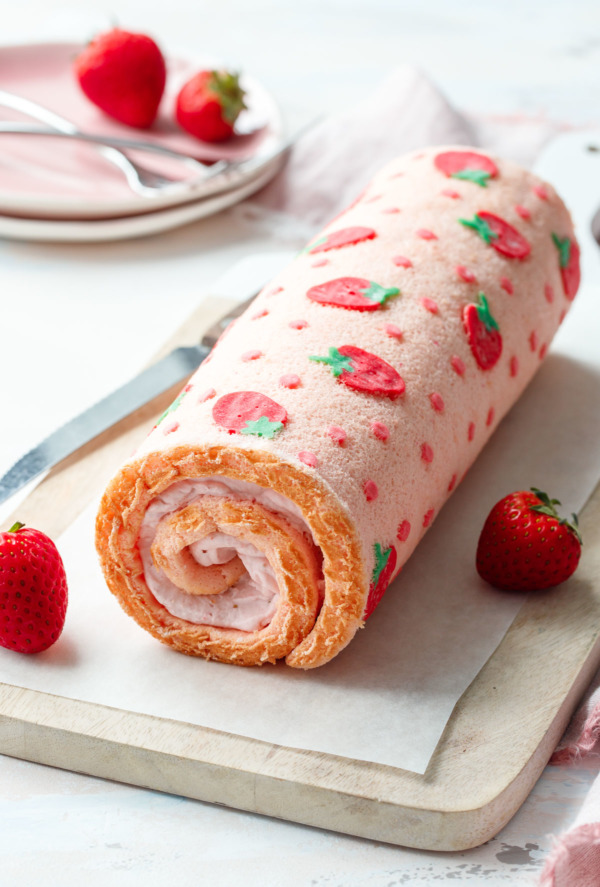
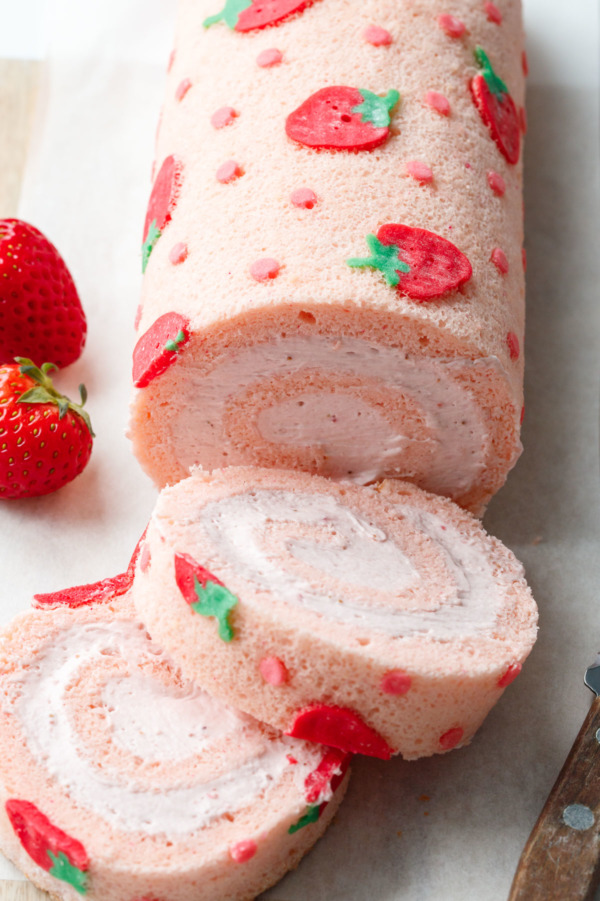
Cake Roll Troubleshooting
If you’re having issues with your cake roll coming out too flat/thin, or if your design wrinkles, cracks or sticks, there are a few reasons why that might be happening.
– Wrong size pan. This recipe is written for a standard jelly-roll pan, which falls in between a half and quarter sheet, approximately 10-by-15-inches in size. A 13-by-9-inch pan would be the closest alternative, though you’ll end up with a slightly thicker cake layer and a shorter, squatter roll overall. If you only have a half sheet pan (13-by-18-inch), you’ll want to 1.5x the recipe (sort of tricky to do with 3 eggs, which is why I recommend getting your hands on a true jelly roll pan if you can).
– The wrong kind of flour. You’ll notice this recipe calls for cake flour, which is more finely-milled and lower-protein than cake flour. All-Purpose flour is just too heavy for this kind of cake, and you’ll end up with a super thin, dense layer of cake instead of a light and fluffy one. Trust me on this one and don’t use AP flour.
– Too much flour. Using too much flour resulted in a base batter that was much thicker, and much harder to incorporate the egg whites into. This ultimately resulted in a batter that was over-mixed and lacking the air it needed to properly rise. I highly, highly recommend using a scale to measure out your flour to be sure you’re using exactly the right amount.
I have a feeling the majority of issues people have with this style of cake is a result of using the wrong kind of flour or over-measuring the flour.
– Unstable meringue. 100% of the lift in this cake recipe is from the meringue: from the air beaten into egg whites. If your meringue is underbeaten, overbeaten, or just plain unstable, it won’t give the cake the lift it needs. Weather can sometimes affect meringues, as can the freshness of your eggs (fresh, cold eggs are best here). I do not recommend using liquid egg whites as they just won’t whip up. Also, use the egg whites immediately after they are beaten; if you let them sit they tend to deflate (so mix the egg yolk/flour batter first, then whip the egg yolks and fold it in).
– Overmixed batter. When you add the egg whites to your base batter, you want to gently fold the egg whites in until they are just incorporated, no more. Check YouTube for proper folding techniques if you’ve never done it before (don’t be like David and Moira).
– Cracks. An overbaked cake, because it is drier and slightly browned/crispy around the edges, is much more likely to crack when you try to roll it up. Pull the cake out of the oven when the top is spongy and the edges are just barely (I mean barely!) starting to brown. Then, keep your potholders on and flip the cake out right away. Dust with sugar and roll it up in a tea towel while the cake is still warm, as this will give it a ‘muscle memory’ that will also keep it from cracking.
– Wrinkles. Not all parchment paper is created equal, and this is one recipe where you want to use something good and thick. Thin parchment tends to wrinkle when it comes in contact with moisture (like, say, a moist cake batter), and those wrinkles will show up in your final cake roll. I use King Arthur’s parchment paper sheets, which are nice and thick and doesn’t easily wrinkle.
– Sticking. Additionally, if you find your design is sticking to the parchment when you try to peel it off, try a different brand of parchment paper or even a silicone baking mat. You can also coat the surface with a very thin layer of butter before adding your design.
With the King Arthur parchment I did not need butter; when peeling the parchment just do it slow and carefully so you can catch and peel off any bits of the design that are sticking before they come off the surface of the roll. Ideally, the design will stay put, but the thin surface of the cake base will peel off with the parchment, revealing a slightly raised design and bubbly surface texture around it. It doesn’t always work exactly this way but the design still looks lovely even when it’s imperfect.
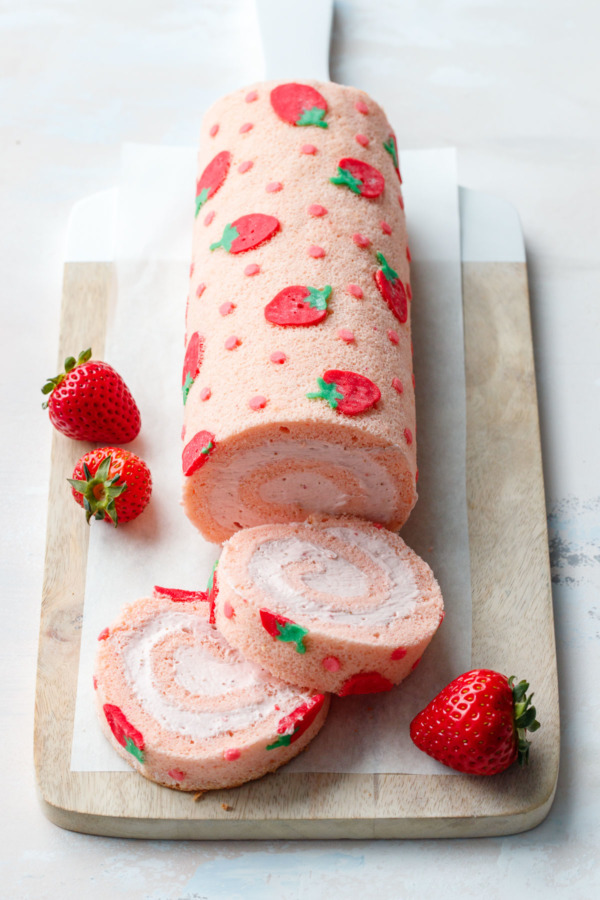
This same technique could be used to create just about any design your heart desires!
Whatever design you go with, I recommend creating a template or drawing the design on the back of your parchment before you start piping. I know I personally have trouble controlling the piping tip (my hands just don’t have that kind of strength), so not having to think about the design as you go is immensely helpful.
I’ve created a printable template with my design (scroll down below the recipe to get it). Just print the template onto a sheet of letter sized paper, and place it under your parchment paper to help you pipe the precise design. Just don’t forget to remove the paper before baking!
Since piping a design like this is somewhat tedious, you can save yourself some effort and only put the design on the outer 2/3 of the cake. The rest will be rolled up inside the final cake roll, after all, so only the part of the cake will actually be visible on the outside of the roll. (If you do this, just be sure that when you roll up your cake, you start with the blank side, otherwise your beautiful design will end up on the inside of the roll where no one can see it.)
UPDATE 8/31/20: After testing this recipe numerous times I’ve adjusted the design paste recipe. The original paste was a thick batter, and while it held detail nicely, it was rather tough to pipe, and thinning it out made it harder to get a detailed design. The new and improved design paste uses softened butter rather than vegetable oil, making for a more butter-cream like consistency that’s quite easy to pipe with a piping bag. It’d also work really well with cake stencils!
The updated design paste blends better with the cake, so the design won’t be quite as ‘raised’ looking as the photos. It’s also softer, and easier to cut than the old version.
For reference, if you’ve made this recipe previously and want to replicate it, the original design paste called for 1 large egg white (30g), 2 tablespoons (16g) powdered sugar, 1/2 cup (50g) cake flour, 1 tablespoon (15g) vegetable oil, and 1-2 teaspoons milk as needed. The updated recipe is shown below.
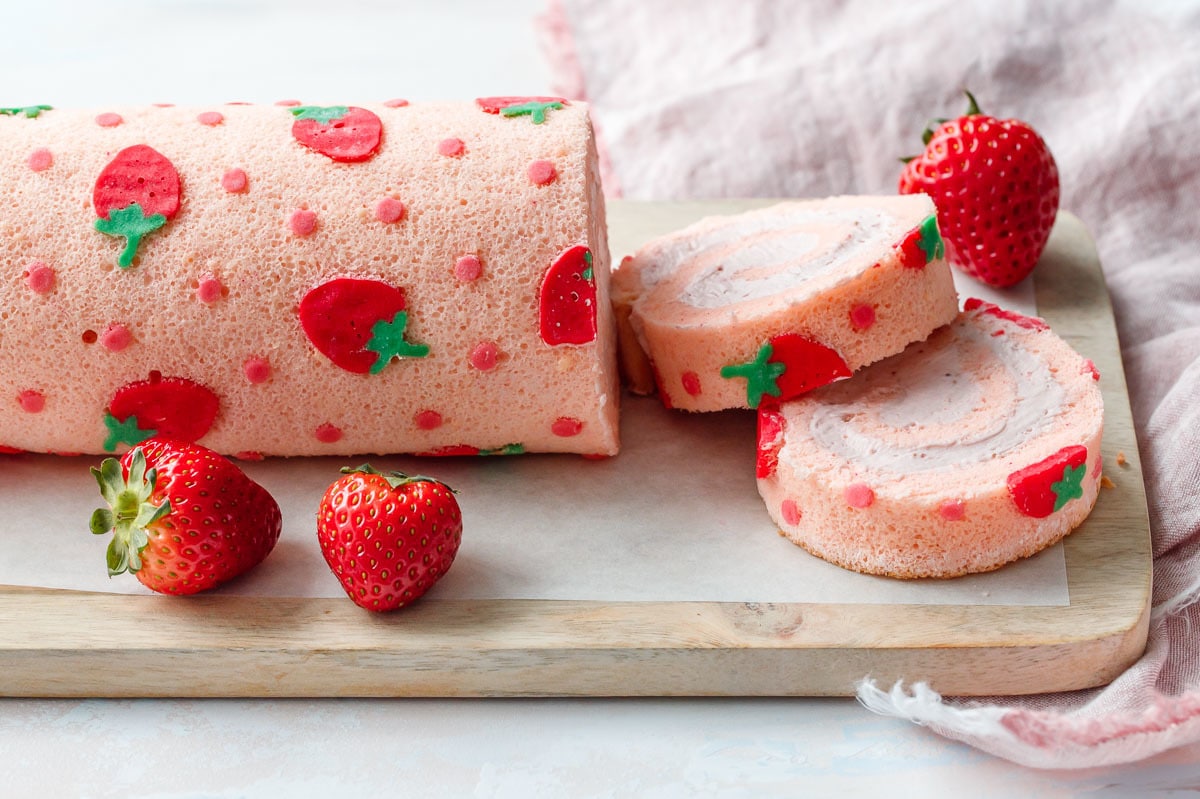
Strawberry Cake Roll
Ingredients
For Paste:
- 2 tablespoons / 30 g unsalted butter, softened (softer than room temp, but not melted)
- 2 ½ tablespoons / 30 g granulated sugar
- ⅓ cup / 40 g cake flour, sifted
- 1 large / 30 g egg white
- food coloring
For Cake:
- 3 large eggs, separated
- 6 tablespoons / 75 g granulated sugar, divided
- 1 tablespoon vegetable oil
- 1 ½ tablespoons / 23 g whole milk
- ½ teaspoon almond extract
- ½ teaspoon kosher salt
- ⅔ cup / 67 g cake flour*, sifted
- food coloring
For Filling:
- 1 cup / 240 g heavy whipping cream
- ¼ teaspoon unflavored powdered gelatin
- ½ ounce / 14 g freeze-dried strawberries
- 3 tablespoons / 38 g granulated sugar
- 1 tablespoon / 8 g powdered sugar
Instructions
- Preheat oven to 350 degrees F. Lightly butter or grease the bottom and sides of a 15 by 10-inch jelly roll pan; line with parchment paper (if using a design template, place the printed template underneath the parchment paper, or trace it onto the back side of the parchment with thick pencil lines).
- To make design paste, with a spatula or wooden spoon, mix butter and sugar together until you get a smooth paste. Add flour and mix until partially incorporated, then add egg white and mix until smooth. Paste should have a buttercream-like consistency.
- Divide paste into 3 bowls (how you divide it proportionally will depend on your design) and add food coloring as desired. (I mixed 20g paste with 1 drop leaf green; 60g paste with 1 drop deep pink and 1/2 drop red; and 40g paste mixed with 1 teaspoon of the pink paste to produce a lighter shade of pink for the dots).
- Transfer pastes into piping bags fitted with small round piping tips (I used my smallest #1 tip for the green, a #3 tip for the light pink dots, and a larger #5 tip for the berries).
- Pipe design onto parchment. Start with the green, then pipe the darker pink berries on top, and finish with the lighter pink dots. Place pan in freezer to allow the design to set while you prepare the rest of the batter.
- Place egg yolks in a mixing bowl. Add 1/4 cup sugar and whisk until sugar is dissolved and yolks are lightened in color. Drizzle in vegetable oil, whisking constantly, until incorporated. Whisk in milk, almond extract and salt. Add food coloring as desired (I mixed a bit of Deep Pink and Red with a toothpick, then added just a toothpick's worth to the batter.)
- Sprinkle sifted cake flour over batter and fold until incorporated.
- In a clean mixing bowl or the bowl of a stand mixer fitted with the whisk attachment, beat egg whites until frothy. Add remaining 2 tablespoons of sugar and beat on high speed until whites hold medium-stiff peaks.
- Fold a third of egg whites into batter to lighten it, then add the remaining egg whites and fold until just incorporated.
- Pour batter over top of frozen design, spreading the batter into an even layer using a large offset spatula. Bang the pan a few times on the countertop to remove any air bubbles and level out the top.
- Bake for about 10 minutes or until top is springy and edges are just barely starting to brown.
- Remove from oven. Carefully invert warm cake onto a piece of parchment backed by a solid surface like a large cutting board. Peel off parchment paper backing, revealing the design. Liberally dust a clean tea towel with powdered sugar and lay on top of cake. Flip cake over so the design is facing down.
- Starting with the side of the cake without the design, carefully roll up the warm cake in the towel. Doing this while the cake is still warm will give the cake a 'muscle memory' and allow you to roll it up later with the filling without it cracking.
- Let rolled cake cool for about 1 hour or until completely cool to the touch.
- Meanwhile, to make filling, in a small bowl, sprinkle gelatin over 1 tablespoon cool water and let soften for 5 minutes. Microwave the mixture in short, 5 second increments until the gelatin is completely dissolved and liquefied. Let cool slightly (but don't let it firm up, if it does, microwave it again).
- In a food processor or clean coffee/spice grinder, pulse freeze dried strawberries together with sugar until very finely ground.
- Place whipping cream in the bowl of a stand mixer fitted with the whisk attachment. Beat on medium speed until frothy, then add powdered sugar, increase to medium high and beat until the paddle starts to leave trails in the cream.
- Mix a spoonful of the partially-whipped cream into the bowl with the melted gelatin until completely incorporated, then, with the mixer running on low, add this back to the bowl with the rest of the cream. Add strawberry sugar mixture and increase speed to medium high, beating until cream holds medium-stiff peaks (take care not to overbeat).
- Carefully unroll cake and remove towel. You may need to hold it with your hand as it will try to roll back up (see, muscle memory!) Spread filling into a thin even layer over the whole cake, leaving about 1/2 inch bare at the far end. You may not need all of the filling, depending on how thick a layer you want.
- Gently roll up the cake, taking care not to use too much pressure lest the filling squeeze out the sides. Wrap tightly in plastic wrap and refrigerate for at least 2 hours or overnight, until filling is set. If you happen to have a cardboard tube lying around, place your cake roll in the tube to keep the bottom from flattening out as it chills (I used a 3 1/2-inch-diameter tube for a whiskey bottle and it was the perfect size).
- To serve, cut into slices with a sharp serrated knife (the design bits are harder than the cake itself. The slices will look best if you cut using a sharp serrated knife, pulling the knife gently towards you, letting the weight of the knife do the cutting; it may take a few strokes to get through the firmer design parts. Try not to saw back and forth or press down or the design will compress into the cake).
- Cake roll will keep, tightly wrapped and refrigerated, for up to 3 days.
Video
Notes
- *Cake flour is very important for this recipe to work (AP is just too heavy and you'll end up with a super thin, dense layer of cake instead of a light and fluffy one).
Did you make this recipe?
Let us know what you think! Leave a Review below or share a photo and tag me on Instagram with the hashtag #loveandoliveoil.Printable Template
If you want to replicate my design exactly, download the printable PDF template below. Letter-size paper is a bit smaller than a standard jelly roll pan, so you can either print multiple pages to fill the pan, or move the paper around underneath the parchment as you go along.
Happy baking!
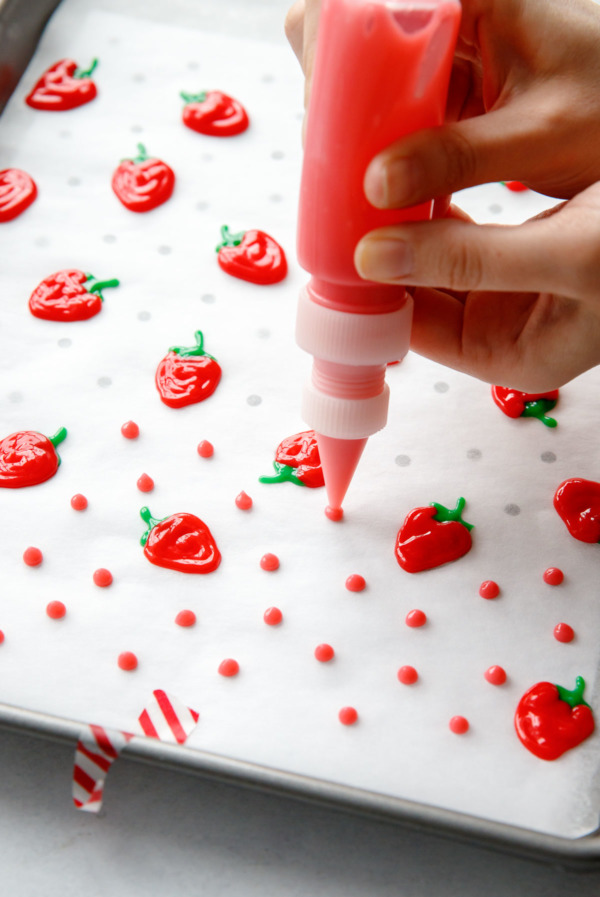
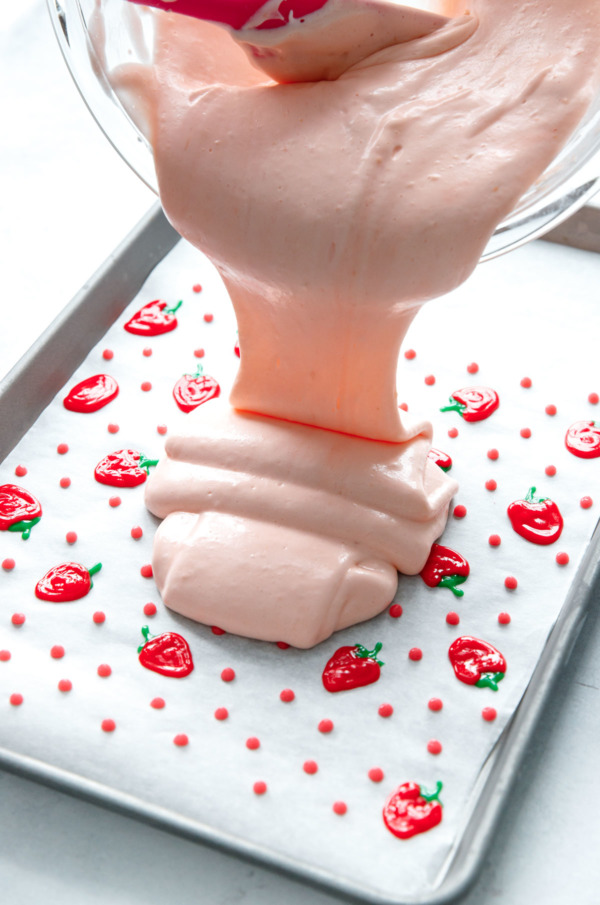
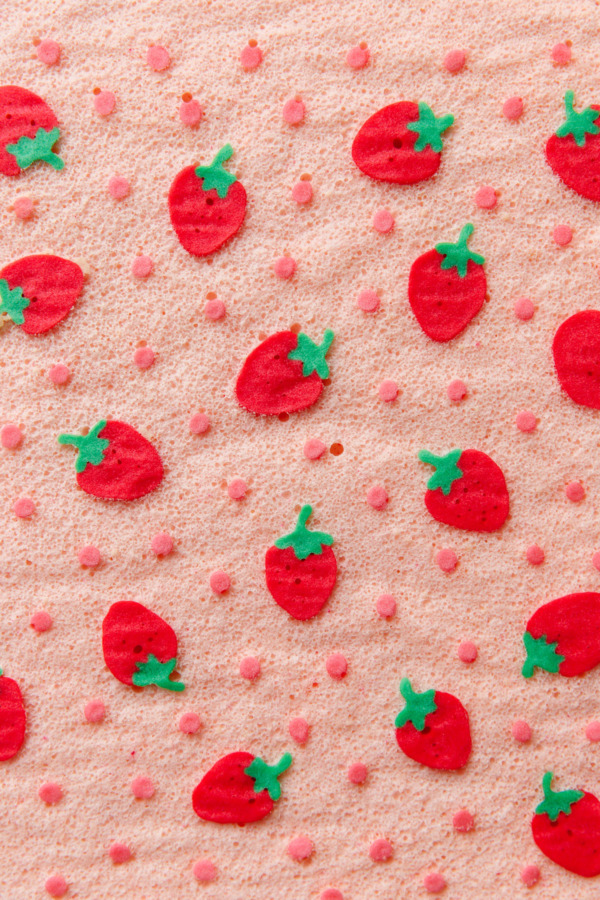
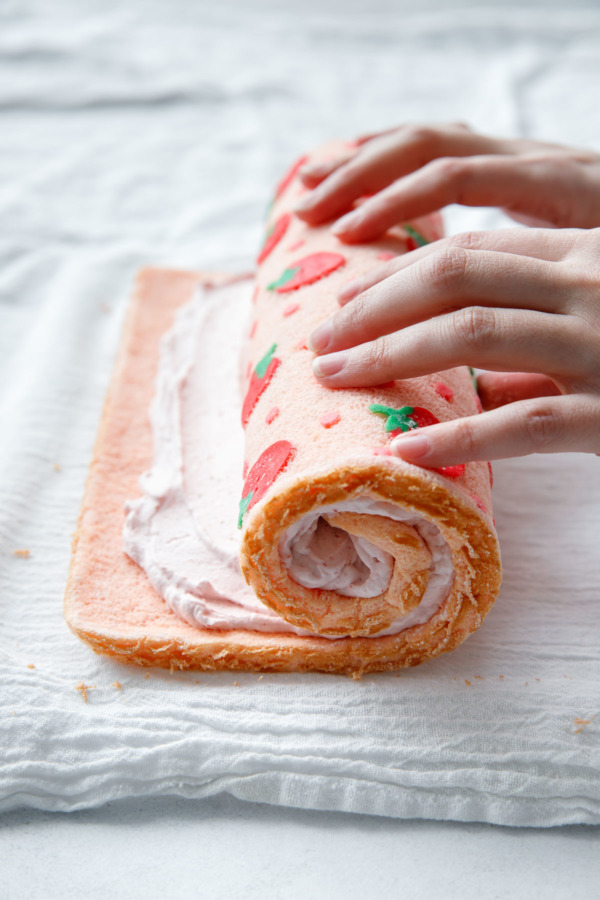
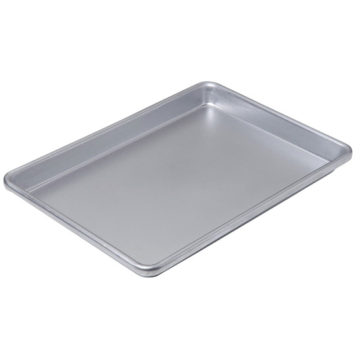
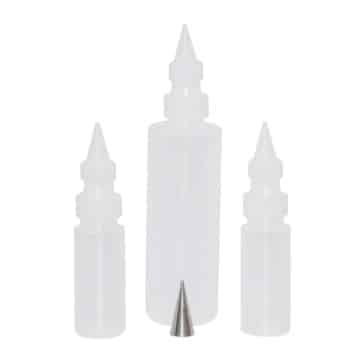
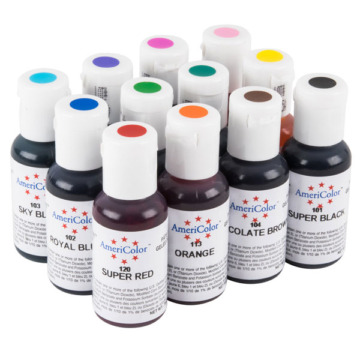
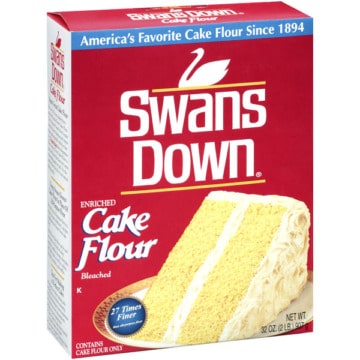
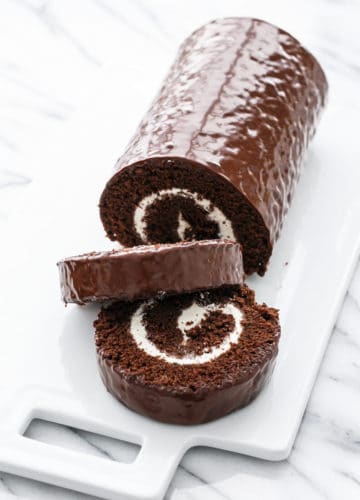
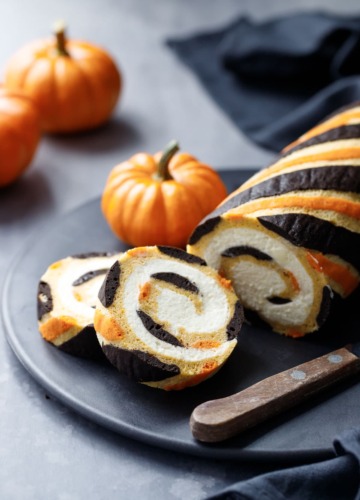
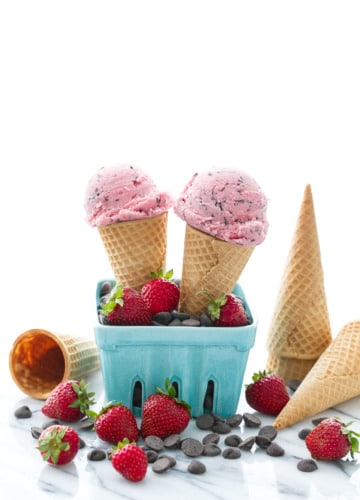
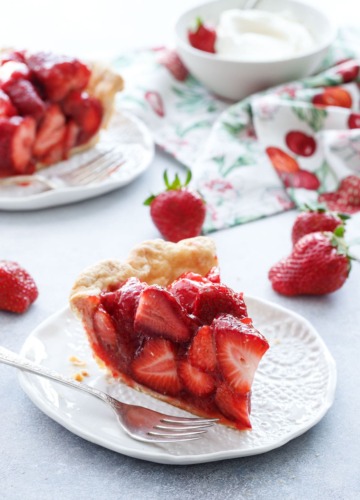
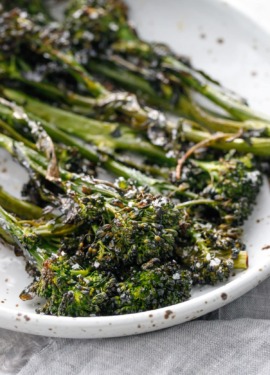
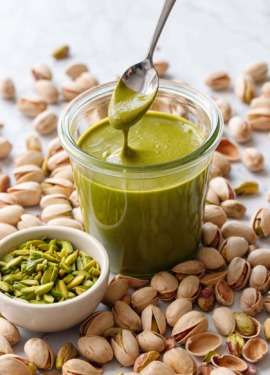
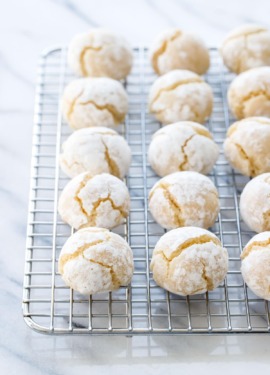
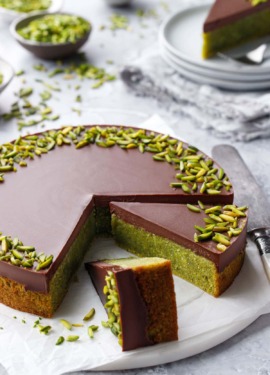
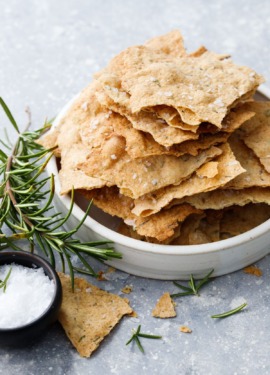
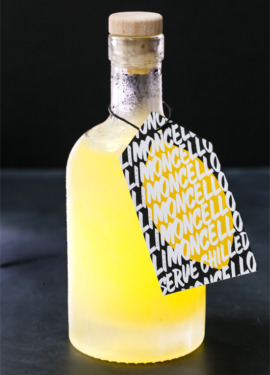
I made this for Easter, and everyone loved it. It was a very light dessert but smaller than some of my other roll cake recipes.
For the paste, I used only the egg white and wasn’t sure if I should toss the yolk or add it to the cake with 3 yolks instead of 4. I ended up tossing the yolk left from the paste. I drew Easter eggs on the parchment paper, making an oval and filling it with squiggles and dots. They turned out nicely on the cake. The design did not stick to the parchment.
For the filling, I used freeze-dried cherries instead of strawberries and strawberry Jello instead of the unflavored gelatin. Will definitely make again soon. Too bad I can’t attach a photo.
Hello Lindsay, Love your recipes, they are fabulous. I am planning on making this strawberry cake roll for easter. Would you please share the design printed template .
Thanks
The form is located below the recipe card to download!
Turned out perfect!
Everything went well because of the helpful details!Light and tasty as I wanted it to be ,thank you!
This recipe was perfect! I was able to substitute a gluten-free cake flour blend and the cake turned out wonderfully. Everyone was impressed by the design! I did add diced fresh strawberries to the whipped cream filling for a little variety in texture and to add extra strawberry flavor.
My first time making a roll cake was a success! I didn’t have cake flour but I looked up a substitute using AP flour (85%) and cornstarch (15%) and made sure I weighed it out.
The cake definitely did not turn out like the picture. I followed the recipe completely and my paste also did not stick to the cake at all. Bad recipe. The ingredients list also did not say anything about freeze dried strawberries.
Sorry you had trouble with this recipe, I’ve never had an issue with the design paste like you mentioned. You’re saying it stick to the parchment instead of the cake? Some brands of parchment are more ‘nonstick’ than others, that could be the issue. You also have to peel the parchment off pretty carefully so it doesn’t take the design with it.
As for the freeze dried strawberries, they are in the filling portion of the ingredients, pulsed with the sugar in a food processor and then mixed into the whipped cream.
Thank you so much for the recipe! It’s a super soft, light and so tasty dessert. I followed the recipe as described and found no problem at all, in fact it’s very easy even for an amateur like me. I even managed to draw the little strawberries on the surface!
I made this recipe (with a couple changes) and it came our pretty well. I used minced fresh strawberries in place of food coloring in the cake and I made the filling using some lemon curd folded into heavy whipped cream. I call it a strawberry lemonade roll. I think if I had to do it again, I would maybe make a drizzle or glaze for the top, because it was not quite sweet enough for me. I don’t know how to attach the pics, but I did a pattern with heart shaped strawberries and lemons and it was pretty good for my first try, ;-) Thanks for the easy to follow recipe and instructions!
Hi made two of these and they look super. No problems at all and they look very professional. I have put both in the freezer for having guests later this month . Freeze dried strawberries are impossible to get so had to raid the cereal box and extract the dried strawberries from it. Would love more recipes like this. Great instructions too.
I made this for my dad’s birthday and my family loved it! I actually ended up adding come instant coffee, cocoa powder, and some melted bittersweet chocolate in the filling instead of freeze dried strawberries (which kinda defeats the purpose of the strawberry design but it was still cute) and it was soooo good. If you don’t know, coffee intensifies the flavor of chocolate. It was great. I also added swirls of homemade chocolate mousse on top.
Can i use fresh strawberries instead of freeze dried.
This is beautiful! Is there a way to make it with fresh/frozen strawberries versus freeze dried ones? Thank you!
Have you tried to flavor the cake with strawberries? I wonder if adding freeze dried strawberries to the cake mix would turn out?
I’ve found strawberries (even freeze dried ones) often do weird things to the texture of baked goods, more than any other fruit. I’d stick with just the extract for this recipe, since the cake itself is so precise, you really don’t want to mess with it.
Just tried this recipe turns out very good I manage untill roll the cake, but I have problem when I unroll thr cake it cracked, can you tell me what is wrong?
Cracks usually mean the cake was overbaked, or possibly you used too much flour (be sure to use cake flour, and weigh it out for accuracy).
My Japan loving 15 year old asked for this cake for her birthday. No one in the family likes buttercream or too sweet desserts so this was perfect as we generally prefer Asian cakes. Will definitely be trying your other rolled cakes.
I’ve made this roll twice now and both times it came out perfect! I don’t consider myself to be a baker but I’m good at following directions. This recipe is very specific so if you don’t know what “frothy” eggs look like, google it. Not sure how to “fold” ingredients, google it. Weigh your ingredients. Don’t let a few bad (and frankly, unhelpful) reviews keep you from making this delicious and impressive dessert! It’s so worth it!!